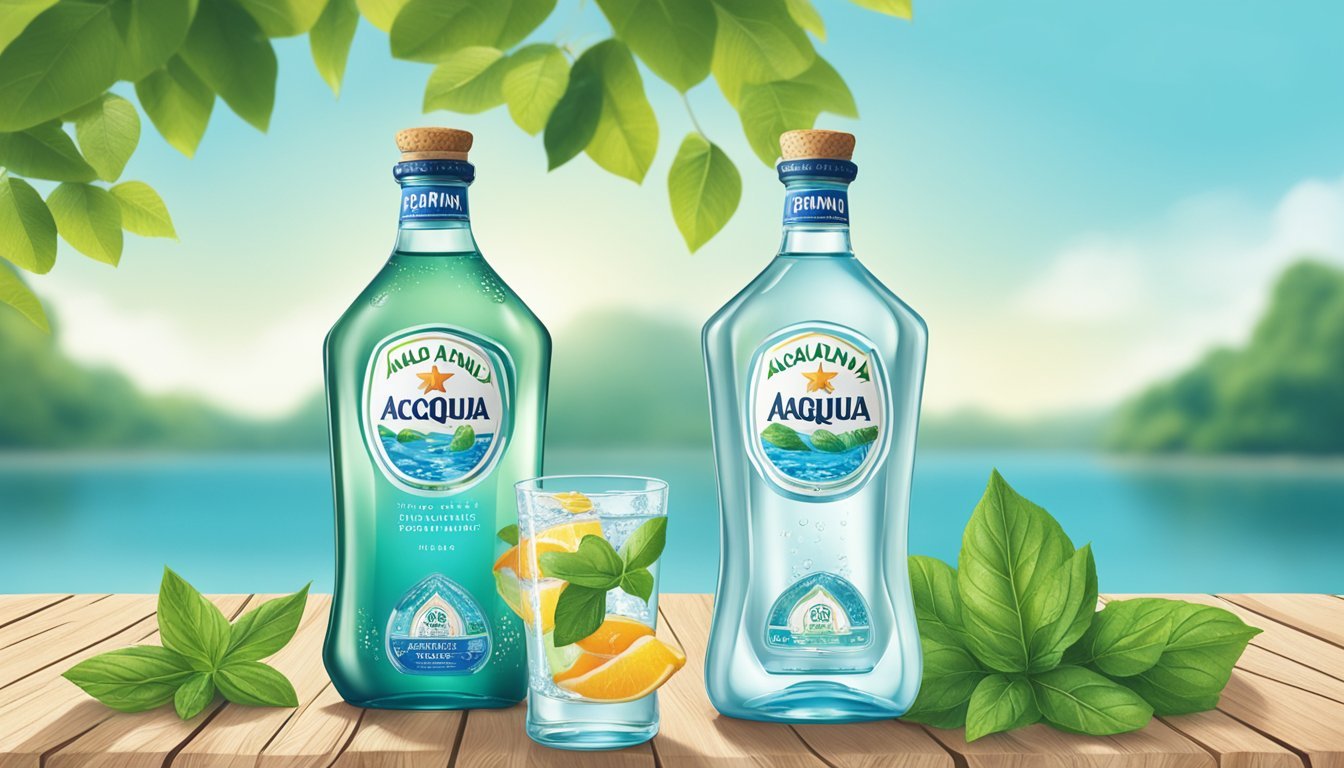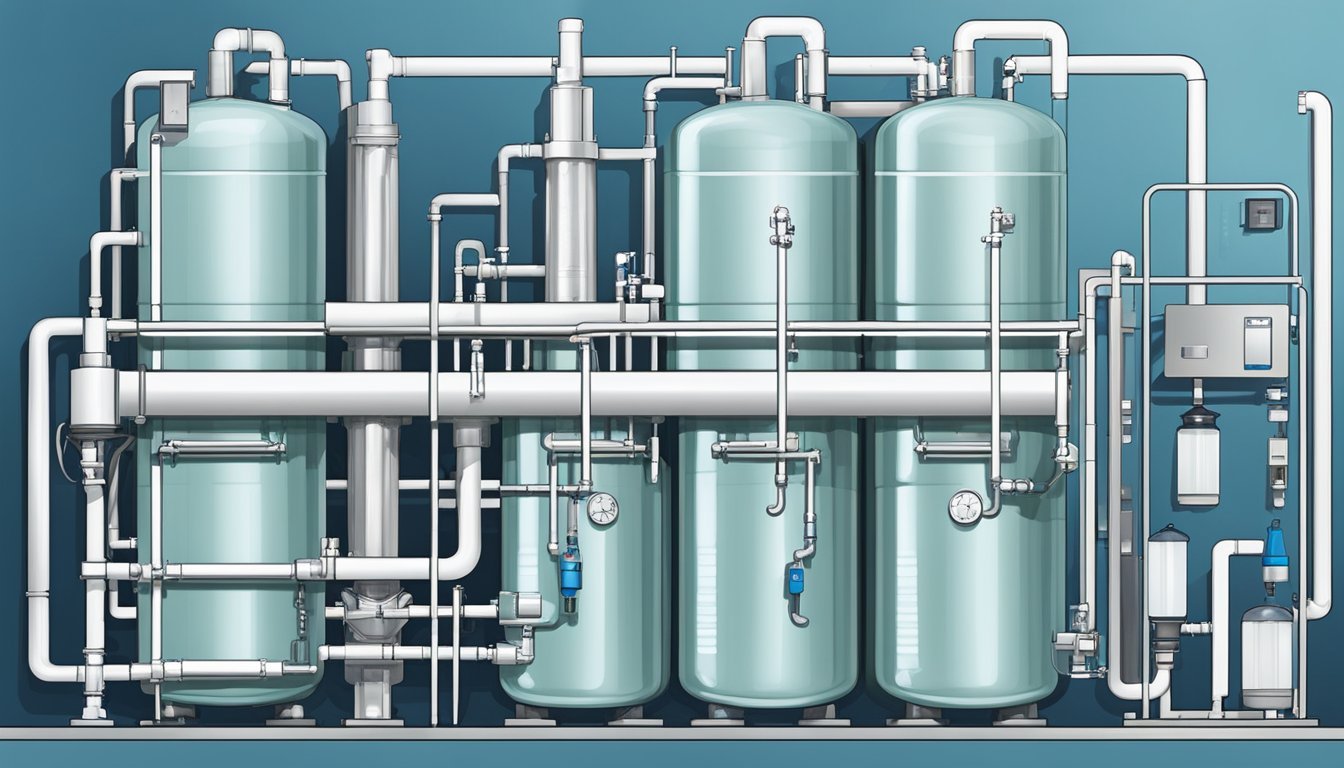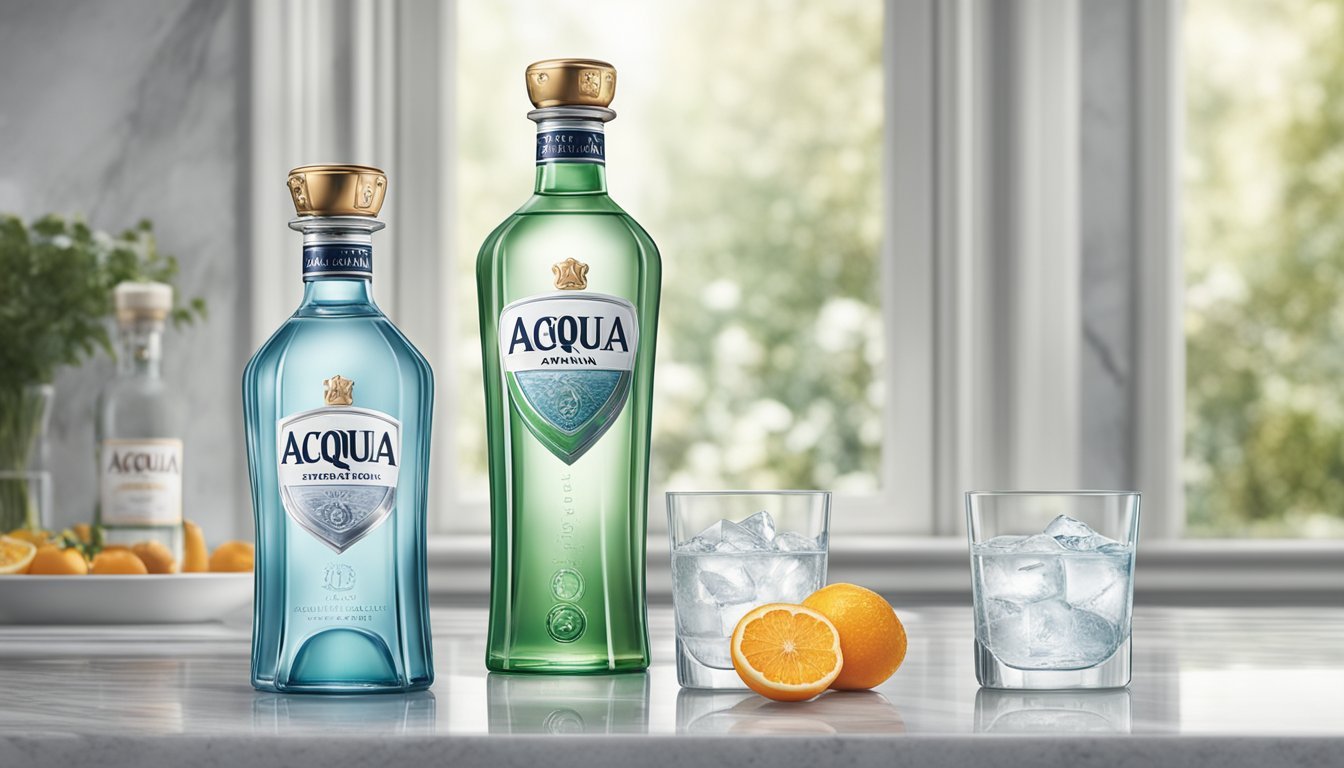Acqua Panna vs. Penta
A Comprehensive Comparison of Bottled Water Brands
When it comes to choosing bottled water, consumers often consider taste, purity, and the source of water as primary factors. Acqua Panna and Penta are two brands that stand out in the crowded marketplace of bottled water, each with its unique selling propositions. Acqua Panna, sourced from Tuscany, Italy, is lauded for its natural filtration and smooth taste, providing a touch of Italian elegance in every sip.
Penta, on the other hand, takes pride in its ultra-purified drinking water, utilizing a patent-pending process that strips water down to its most basic form. With a meticulous purification system, Penta offers a product that aims for exceptional purity and quality. Both brands have carved out their own niche but propose different benefits and experiences to the discerning consumer.
In the debate of Acqua Panna versus Penta bottled water, the discussion extends beyond mere hydration. The choice touches upon personal preferences for mineral content, the importance of the water's source, environmental impact, and the process each brand uses to deliver their promise of clean, refreshing water. As such, consumers' allegiance to a bottled water brand often reflects their values and lifestyle.
The Fundamentals of Bottled Water
The selection of bottled water on the market today comes with numerous choices, each variety offering a unique profile of taste, mineral content, and source. Consumers face a range of options from natural spring waters like Acqua Panna to purified brands such as Penta.
Understanding Water Sources
Bottled water brands often highlight their sources to appeal to consumers. Natural spring water, like Acqua Panna, originates from a natural aquifer and takes approximately 13 years to flow through the Tuscan underground aquifer to the surface. Artesian water comes from a well tapping a confined aquifer where the water level stands above the top of the aquifer. Some brands may source water from volcanic rock filtrations, which are believed to add unique mineral compositions to the water.
Bottled Water vs. Tap Water
The debate between bottled water and tap water encompasses both taste and purity. Bottled water brands may emphasize the purity and cleanliness of their product, which is often filtered or sourced from protected springs. Tap water, regulated by government entities like the EPA in the United States, is treated and distributed through municipal systems and is a cost-effective option for hydration. Bottled water, on the other hand, passes through rigorous FDA regulations and may cater to those seeking specific mineral content or taste.
Regulations and Standards
Bottled water is subject to regulations to ensure safety and quality for consumers. In the United States, the FDA sets standards for bottled water, covering source protection, production, and distribution. These standards ensure that bottled water is free from contaminants and meets designated safety criteria before reaching consumers. The water quality must comply with federal and state regulations as well as industry standards.
Types of Bottled Water
Mineral Water: Rich in minerals like calcium and magnesium, must contain at least 250 parts per million total dissolved solids.
Spring Water: Sourced directly from an underground aquifer and must be bottled at the source.
Purified Water: Undergoes processes such as deionization or reverse osmosis to remove impurities.
Alkaline Water: Water that has a higher pH level than tap water, commonly produced by using an ionizer.
Sparkling Water: Infused with carbon dioxide under pressure to create effervescence.
Distilled Water: Water boiled into vapor and condensed back into a liquid, removing minerals and impurities.
Electrolyte Water: Enhanced with electrolytes for better hydration after intense physical activity.
The Role of Minerals and Electrolytes
The mineral content of natural water sources includes beneficial minerals such as magnesium, calcium, and electrolytes. These can aid hydration by replacing lost electrolytes in the body. Electrolyte water is especially targeted towards those looking to replenish these vital minerals more efficiently. Some consumers choose mineral water for its perceived health benefits and distinct taste, which can be attributed to the unique balance of minerals present.
Water Filtration and Purification Processes
Choosing between bottled water brands like Acqua Panna and Penta involves understanding their water filtration and purification processes. These processes are pivotal in determining the quality of hydration offered by each brand.
Reverse Osmosis and Its Impact
Reverse osmosis is a critical purification method widely employed in the bottled water industry. It involves water being forced through a semi-permeable membrane to remove a wide array of contaminants, including heavy metals and some organic compounds. Penta water undergoes a meticulous reverse osmosis process, which contributes significantly to its purity and the removal of impurities.
Unique Filtration Methods
Each brand may use distinctive filtration techniques that set them apart. Acqua Panna, sourced from Tuscany, undergoes natural filtration through underground rocks which enriches it with minerals and provides its unique taste. Penta, on the other hand, emphasizes its patented 13-step purification process that includes not only reverse osmosis but also UV light treatment and microfiltration, ensuring a high level of purity.
Water Purity and Contaminants
The purity of bottled water is measured by its lack of contaminants such as:
Heavy metals: Lead, mercury, and cadmium.
Organic contaminants: Pesticides or herbicides.
Bacterial contamination: Presence of coliforms or other bacteria.
Both Acqua Panna and Penta strive to offer water with negligible contaminants. Penta in particular states its water is free of heavy metals, fluoride, and other impurities.
Comparative Analysis of Water Treatment
Criteria Acqua Panna Penta Source Natural spring Municipal Supplies Filtration Method Natural underground rock filtration 13-step purification process Key Purification Steps - Reverse osmosis, UV treatment, microfiltration
Both brands focus on providing clean drinking water, but their treatment methods vary, which can affect mineral content and taste.
Health Implications of Drinking Water Quality
The quality of drinking water is directly tied to health implications. Both reverse osmosis and microfiltration help eliminate potential health hazards from bacterial contamination and organic contaminants. Consuming water that has undergone comprehensive purification, such as Penta's, can support the maintenance of good health by providing contaminant-free hydration. Acqua Panna, while not subjected to such intensive purification, naturally possesses a pure quality and mineral content beneficial for hydration.
Acqua Panna and Penta: A Comparative Overview
This section offers a detailed comparison between Acqua Panna and Penta, two prominent bottled water brands, focusing on their origins, composition, and taste profiles.
Profile of Acqua Panna
Acqua Panna is an Italian brand known for its natural spring water sourced from Tuscany. Established in 1880, it originates from the foothills of the Apennines and is captured from a natural spring. The water is noted for its journey through the aquifer, which lasts an impressive 14 years, allowing it to acquire a unique mineral composition. Acqua Panna touts a smooth pH of 8.0 and is often recognized for its purity and natural filtration through the Tuscan terrain.
Source: Tuscany, Italy
Taste: Smooth
pH: 8.0
Noted minerals: Natural composition from the Tuscan aquifer
Profile of Penta
Penta water differs significantly from Acqua Panna. This American water brand utilizes a patented 13-step purification process, which includes spinning the water under high speed to increase oxygen levels and a process called ultrapurification. It is one of the few brands to offer such an extensive filtration process, which is designed to ensure a high level of purity.
Source: United States
Purification: 13-step patented process, including ultrapurification
Taste: Known for its absence of flavors, signifying purity
Unique feature: High oxygen levels due to the unique purification process
Source and Composition Analysis
Both Acqua Panna and Penta emphasize the purity of their water; however, the method of achieving this purity varies. Acqua Panna naturally filters through limestone and volcanic rock in an underground aquifer in Tuscany, gaining minerals and a crisp profile. Penta, on the other hand, is not sourced from a natural spring but instead undergoes a complex purification process to remove impurities and achieve its purported 100% purity.
Flavor Profiles and Taste Comparison
When discussing taste, Acqua Panna is often praised for its naturally smooth and crisp flavor — a direct result of the mineral balance acquired from its journey through the Tuscan terrain. Contrastingly, Penta is characterized by its lack of specific flavors or minerals in the taste, promoting the brand's aim for ultimate purity and a clean finish. These differing taste experiences cater to varied consumer preferences: those who enjoy the subtle natural flavors imparted by minerals and those who prefer a more neutral-tasting water.
Consumer Perception and Brand Reputation
In the landscape of bottled water, Acqua Panna and Penta have cultivated distinct images in the minds of consumers. Their brand reputations hinge on several factors, from market presence to how they're ranked by both experts and consumers, to their environmental footprints.
Market Presence and Product Variety
Acqua Panna, an Italian brand, boasts a global distribution with a reputation for premium natural spring water. Known for its smooth taste and origins from the hills of Tuscany, it has a strong market presence in the realm of high-end restaurants and hotels. Meanwhile, Penta, with its ultra-purified water, has a narrower market reach but focuses on the purity aspect of hydration and wellness.
Customer Reviews and Preferences
Acqua Panna
Positive: Acclaimed for its taste and association with luxury.
Negative: Less accessible due to its premium price point.
Penta
Positive: Praised for its promise of purity and hydration benefits.
Negative: Criticism centers on the price and limited product range.
Customer sentiment often pivots around these perceptions, with Acqua Panna commonly preferred for taste and Penta for purity.
Water Brand Rankings: Worst to Best
In various rankings of water brands, from worst to best, Acqua Panna is frequently positioned as a top choice for its taste and natural origins. Brands such as Dasani and Aquafina, owned respectively by Coca-Cola and PepsiCo, sometimes fall lower in these lists due to consumer reports on taste and concerns about the water sources. Purity plays a significant part in these rankings, with Penta's dedication to ultra-purification earning it high marks among health-conscious consumers.
Environmental and Ethical Considerations
Bottled water brands are often scrutinized for their environmental impact. Acqua Panna has made strides to reduce its carbon footprint by using recycled materials in its bottles. Penta also emphasizes its eco-friendliness by using recyclable materials and promoting responsible water consumption. Consumers frequently gauge brand reputation on these efforts towards sustainability and ethical responsibility.
Practical Insights for Consumers
When considering the purchase of Acqua Panna or Penta bottled waters, consumers should assess hydration benefits, ingredient transparency, and the environmental impact of their choices.
Hydration and Health Benefits
Acqua Panna is a natural mineral water known for its purity and smooth taste. The spring water is sourced from Tuscany and naturally enriched with electrolytes and minerals, providing essential hydration. It typically has a neutral pH, meaning it is neither overly alkaline nor acidic.
Penta, on the other hand, boasts an ultra-pure, microfiltrated drinking water. It uses a patented process that includes both filtration and reverse osmosis to create water that claims to hydrate the body efficiently. Penta water does not emphasize minerals, which implies it may have less impact on replenishing electrolyte balance during hydration.
Making Informed Water Choices
Acqua Panna:
Source: Tuscany's natural springs.
Mineral content: Contains minerals like calcium and magnesium.
Purity: Naturally occurring spring water with minimal processing.
Penta:
Filtration: Uses a patented 13-step purification process.
Purity: Focuses on the removal of impurities including antioxidants and acidic ions.
Added Benefits: Claims improved hydration without added electrolytes.
Consumers seeking bottled water options should consider water quality reports and FDA regulations, ensuring that their choice in water quality meets strict standards for clean drinking water.
The Future of Bottled Water Consumption
Environmental awareness and consumer health trends are shaping bottled water consumption. Both Acqua Panna and Penta offer different qualities:
Acqua Panna aligns with trends for natural mineral waters with inherent health benefits.
Penta caters to a market looking for highly purified and possibly alkaline water.
The sustainability of packaging and the carbon footprint of water transportation remain critical factors to consider for the future.
Understanding Labeling and Marketing Claims
Both Acqua Panna and Penta make specific claims about their products. Acqua Panna labels highlight natural mineral content, while Penta focuses on the purity and hydration efficiency of its water. Consumers are encouraged to read labels carefully, noting any FDA-regulated health claims and understanding the actual benefits of mineral water versus electrolyte water or alkaline water.





